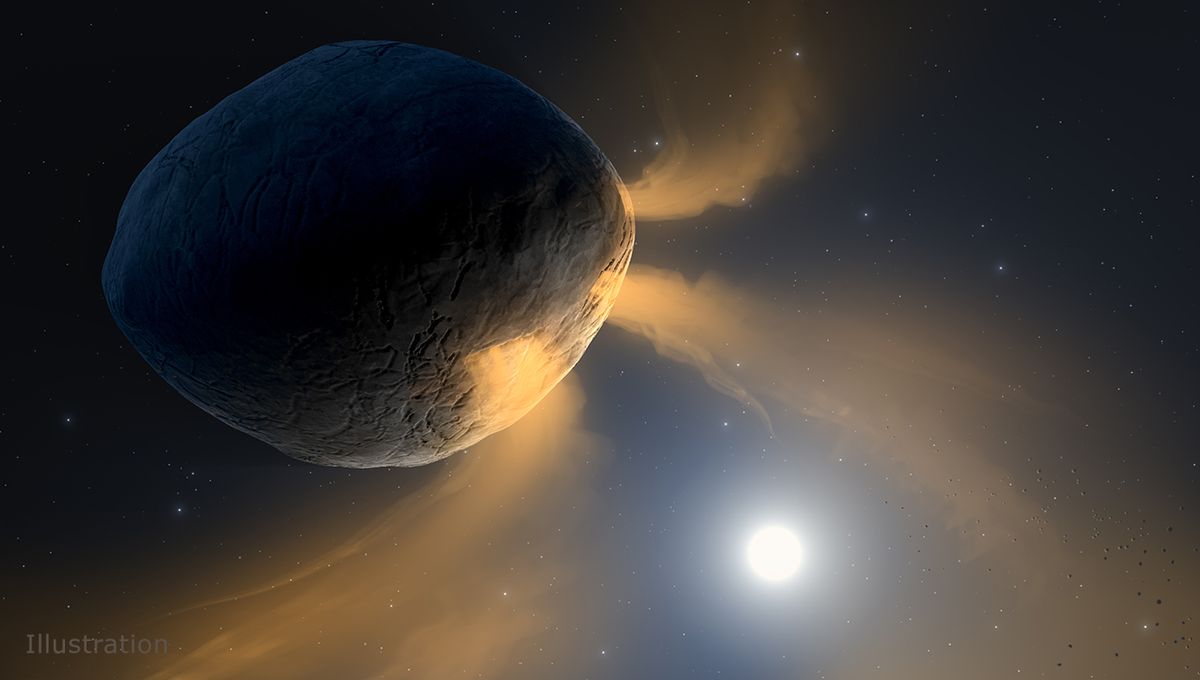
The iconic Arecibo observatory may no longer be a working telescope following news this week that it won’t be rebuilt after its 2020 collapse – but that doesn’t mean it’s finished contributing to our knowledge of the cosmos. In fact, new research reveals that it discovered something new and unusual about the well-known “potentially hazardous” asteroid, 3200 Phaethon.
Phaethon is already a strange asteroid – it’s oddly blue, acts more like a comet, and is the only known asteroid parent body of a meteor shower. Now, its spin rate is speeding up, only the 11th known asteroid to show that.
Named for the son of the Greek sun god Helios, Phaethon’s orbit takes it closer to the Sun than any other known named asteroid. Though it poses no threat to Earth due to its size and close proximity, it is deemed a “potentially hazardous” asteroid and so is well studied.
It’s very rare for an asteroid to change its rate of spin. Phaethon is the largest of the 11 known space rocks to do it, at 5.4 kilometers (3.4 miles) across. Its orbit is known to a very accurate degree (which is why we know it is no threat) and it rotates once every 3.6 hours.
However, the new observations reveal that is decreasing by 4 milliseconds per year.
The Japan Aerospace Exploration Agency (JAXA) is set to send its DESTINY+ mission to fly by the asteroid in 2028, so discovering Phaethon is speeding up could have big repercussions for the carefully calculated trajectory of the craft.
Arecibo planetary scientist Sean Marshall has been working on determining the size, shape, and rotation of Phaethon ahead of this mission, using light curve observations – graphs showing the light intensity of a celestial object, and stellar occultations – when an asteroid passes in front of a star causing its light to dip, much like how we discover exoplanets. Using data ranging from 1989 to 2021, Marshall created a model that shows Phaethon is shaped like a top, similar to asteroid sample mission targets Bennu and Ryugu.
However, Marshal couldn’t make the latest light curve observations from 2021 fit the model. The model only worked if the object had a constant rotational acceleration – if it was speeding up.
“The predictions from the shape model did not match the data,” Marshall said in a statement. “The times when the model was brightest were clearly out of sync with the times when Phaethon was actually observed to be brightest. I realized this could be explained by Phaethon’s rotation period changing slightly at some time before the 2021 observations, perhaps from comet-like activity when it was near perihelion in December 2020.”
Thankfully, this doesn’t mean DESTINY+ needs to rethink its plans. Marshall actually notes that this is good news for the team as the steady change means they can predict Phaethon’s orientation at the time of the scheduled flyby with excellent accuracy and will know which regions of the asteroid will be lit up by the Sun at that time, which will help get some spectacular shots of the asteroid’s surface as it swings by.
Keep being weird, Phaethon.
The work was presented recently at the 54th American Astronomical Society’s Division for Planetary Sciences.
Source Link: “Potentially Hazardous” Asteroid Phaethon Just Demonstrated Something Rare For A Space Rock